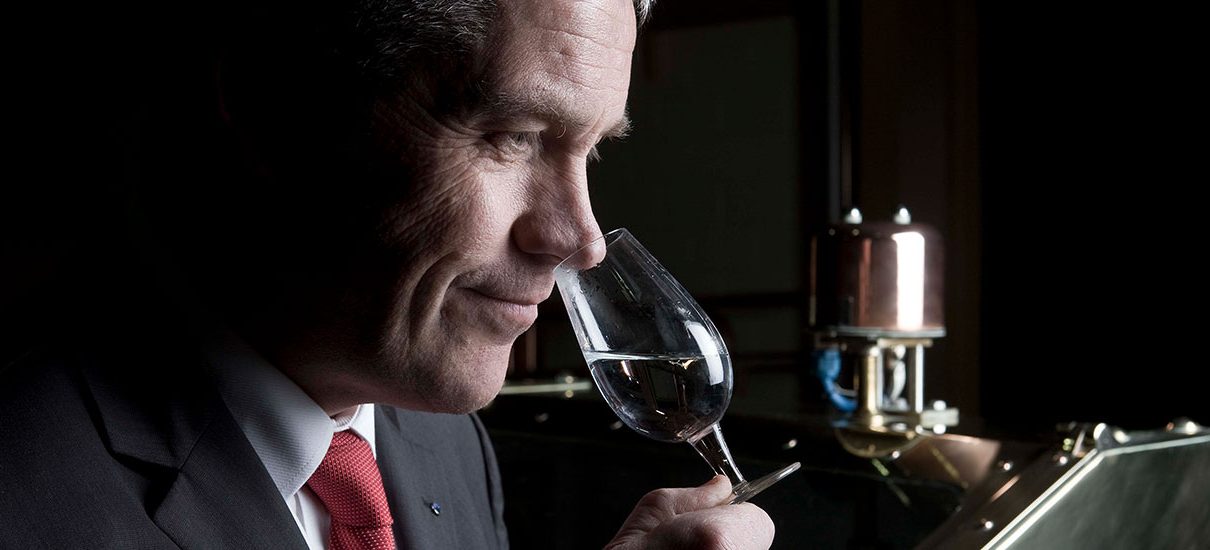
In the 200 years since we started distilling whisky, we’ve tasted a dram or three. So, we decided to create a guide that demystifies the tasting process and helps you get the most of the flavors and scents in the dram that started it all.
HOW TO DRINK WHISKY NEAT
Drinking your whisky neat means having it straight, without ice or mixers. Many people find that this is a great way to fully appreciate whisky’s flavors, aromas and finish.
Start with room-temperature whisky – not chilled. We recommend drinking your whisky from a tulip-shaped or Glencairn glass. While you can enjoy whisky from any glass, the headroom in a whisky tasting glass can help you better explore the aromas and flavors.
ADDING WATER
Adding water to your whisky can help release scents. However, everyone will respond differently to different amounts of water.
There is a scientific reason for this: extra water reduces the solubility of some long-chain compounds, such as esters. Some drinkers may only require only a few drops, while others will need a healthy splash.
The effect of adding water is similar to when you walk in the countryside after a rain shower: it’s fragrant and you can smell the blossoms. Water mixes with the whisky and there’s a slight exothermic reaction. This reduces the alcohol strength, so rather than having the alcohol burning your nose, you get the fruity, floral flavors.
ADDING ICE
Some whisky drinkers prefer adding ice, which can mellow out the flavors in similar ways to water.
When you add ice to whisky, it chills the drink gradually. Cooling your scotch can suppress some of the stronger flavors, like alcohol, and highlight the smoother, mellower notes. Just as with water, the amount of ice can significantly impact the drinking experience. We recommend you start with one cube and add one or two more, if needed.
As the ice melts, it gradually dilutes the whisky – just at a slower pace than water. This can unveil new flavors and layers of complexity.
HOW TO TASTE WHISKY IN 4 STEPS
Fully appreciating whisky means spending time with everything from the look to the aromas, flavor, and finish. Here’s how it goes, from start to finish:
1. OBSERVE
First things first – take a look at your dram.
You can tell a lot about the whisky in your glass from the way it looks. The color of single malt whisky is heavily influenced by how it’s matured. For example, our 25 Year Old expression, finished in first-fill Pedro Ximénez Sherry and Tronçais Oak Cognac casks, has a rich, amber shades. At the other end of the spectrum, our 15 Year Old expression is selectively finished in French Limousin Oak casks, giving it a deep, intense golden color.
To judge the color of the whisky, simply hold your glass up to a neutral background and look closely.
2. TAKE IN THE AROMAS
Once you’ve taken a good look at your whisky, it’s time to smell it.
Nosing a whisky isn’t just for show – it’s vital to the tasting experience. Almost 80% of our taste sensation comes from our sense of smell. The human nose can recognize up to 35,000 smells and detect aromas diluted to one part in a million.
You should always nose a whisky more than once. Your first inhalation will usually be a rush of alcohol, while your second will start to reveal the different characteristics of the whisky. As the bouquet opens, you’ll experience a full journey of aromas: fruity, floral, spicy, woody, creamy, sweet… Adding a little water to the dram can actually aid this process.
To smell, start by swirling your glass gently to aerate the whisky. With your nose slightly above the rim, allow the scents to come to you rather than taking a deep inhale. Then, take short, gentle inhales. As your nose adjusts to the alcohol, try to identify the layers of scents, from the initial bright, fruity, and floral notes to the deeper, richer undertones of wood, spice, or peat. Each whisky is different, so take your time to explore the nuances.

3. TASTE THE WHISKY
Take a mouthful of whisky, hold it for a moment and then swallow it as slowly as possible.
First, you’ll notice how the whisky feels in your mouth – this is the mouthfeel. You’ll detect the liquid’s viscosity, pungency and smoothness. At this stage, whisky is often described using terms such as clean, crisp, rich, creamy or silky. Tasting can also reveal new aromas beyond what you identified when nosing.
Next, you’ll detect the flavors of the whisky. They may be generally categorized as nutty, sweet, spicy, fruity or smoky, but more specific flavors will come through too, such as honey, toffee apples, oranges, cinnamon, hazelnuts and raisins. For guidance, see the tasting notes for each of our expressions.
4. SAVOR THE FINISH
At the distillery, we like to talk about the “finish” of a whisky.
This is simply the length of time the flavor lingers in your mouth once you’ve swallowed the whisky. In older whiskies, this can last for a long time.
Depending on the expression, the finish might be warm, clean, sharp or dry. New flavors might also come through at this stage, perhaps deeper tastes like vanilla, licorice, chocolate or ginger.